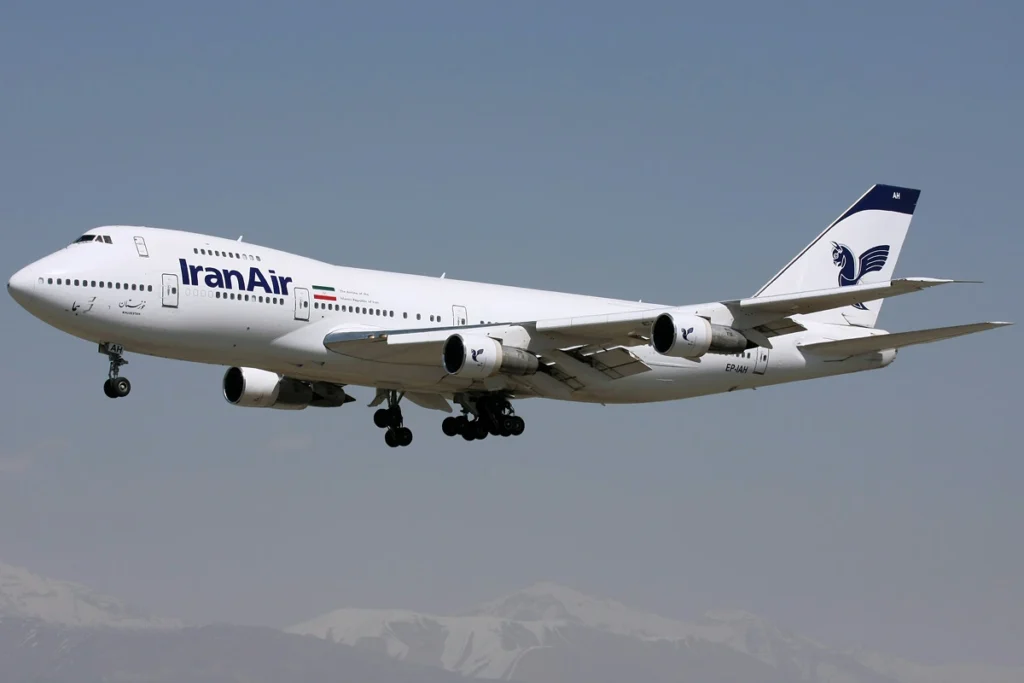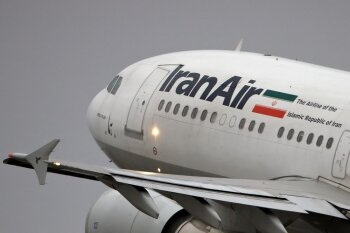Iran's national airline is facing an impending ban from various European countries over concerns related to the country's conduct with Russia. Today, we will analyze what this means for Iran Air, Iranians, and competitor airlines.
Another Ban
Relations between Iran and the Western World have been rather icy in recent decades. Iranian airlines was previously banned from flying to Europe between 2010 and 2016 and briefly in 2020.
Following Iran's recent sale of ballistic missiles to Russia for use against Ukraine, various European countries have announced a new round of sanctions on the country in addition to the United States.
The United Kingdom, France, and Germany have announced that any flights from Iranian carriers serving their countries will be suspended. This only affects Iran Air, the only Iranian carrier serving airports in these countries.

If the United Kingdom and European Union both move to ban Iranian carriers from flying to their countries, the reciprocal might also be true.
Lufthansa and Austrian Airlines are the only two airlines from European Union member states flying to Iran with service to Tehran's Imam Khomeini Airport (IKA).
With Iran Air facing a ban from European countries, the Iranian government might also move to ban Lufthansa and Austria. It is also likely that because of the European Union's move against Iranian carriers, those two airlines might choose to suspend services on their own accord.
Potential Impacts
Iran Air's European network consists of eight destinations. According to Simple Flying, Iran Air carried roughly 273,000 passengers between Tehran and Europe in 2023. The airline's European destinations are the following, listed in order of popularity:
- London Heathrow, England (LHR)
- Milan Malpensa, Italy (MXP)
- Paris Charles de Gaulle, France (CDG)
- Hamburg, Germany (HAM)
- Frankfurt, Germany (FRA)
- Cologne, Germany (CGN)
- Vienna, Austria (VIE)
- Rome Fiumicino, Italy (FCO)

Iran Air is a comparatively small airline when you look at the other big names serving the Iran-Europe market. While competitors like Turkish Airlines, Qatar Airways, and Emirates necessitate stopovers in their respective hubs, they offer far more services than Iran Air and thus outcompete them in most cases. Iran Air largely remains a popular option thanks to its nonstop offering.
If Iran Air is banned again, passengers will have no choice but to opt for carriers like Turkish or Middle Eastern alternatives. That is not a massive change, given that most passengers from Western countries who fly to Iran are flying these airlines anyway.
However, Iran's location puts it right along the flight path of many routes between the Western world and Asia. Countless airlines pay Iran for the right to use its airspace when they operate routes like Amsterdam to Bangkok or Zurich to Singapore.
If Iran retaliates with a ban on all European airlines, it could entirely ban them from its airspace entirely. That could lead to longer flights requiring more fuel, thus causing pricier tickets.
Türkiye is not a member of the European Union, and airports like Istanbul (IST) are prime locations from which to see old Iranian airliners. Mahan Air, Iran Air, Iran Airtour, ATA Airlines, and Iran Aseman Airlines are just some of the Iranian carriers you'll see at Istanbul Airport.

As such, Turkish Airlines is likely to steal most of Iran Air's traffic when it comes to carrying passengers from secondary or primary European hubs.
Aside from Tehran, Turkish also offers service to the Iranian cities of Isfahan (IFN), Mashhad (MHD), Shiraz (SYZ), Tabriz (TBZ), and Urmia (OMH).
Qatar Airways will be the second airline to benefit significantly as aside from Tehran, the airline serves Isfahan (IFN), Mashhad (MHD), and Shiraz (SYZ). However, the carrier lags behind Turkish when it comes to serving smaller cities in Europe.
Comments (6)
 Steven
How hypocritical can you get - the EU will ban Iranian airlines because they (Iran) supplied missiles to Russia
And EU have not supplied missiles. arms, aircraft, tanks, drones etc to Ukraine????
What a complete bunch of corrupt halfwits they are that 'run' Europe .................. I wouldn't even trust them to 'run' a bath
Steven
How hypocritical can you get - the EU will ban Iranian airlines because they (Iran) supplied missiles to Russia
And EU have not supplied missiles. arms, aircraft, tanks, drones etc to Ukraine????
What a complete bunch of corrupt halfwits they are that 'run' Europe .................. I wouldn't even trust them to 'run' a bath
 ShelleyinBoston
Big difference between a country attempting to over-run a sovereign country ( Russia - aggressor) and a country attempting to defend said aggression. Cant compare those that support Russia to those that support Ukraine. After 70 years of watching various countries squabble over fly over rights. Its all a temporary tempest. It’ll be solved in a year or two. Or not.
ShelleyinBoston
Big difference between a country attempting to over-run a sovereign country ( Russia - aggressor) and a country attempting to defend said aggression. Cant compare those that support Russia to those that support Ukraine. After 70 years of watching various countries squabble over fly over rights. Its all a temporary tempest. It’ll be solved in a year or two. Or not.
 ShelleyinBoston
Big difference between a country attempting to over-run a sovereign country ( Russia - aggressor) and a country attempting to defend said aggression. Cant compare those that support Russia to those that support Ukraine. After 70 years of watching various countries squabble over fly over rights. Its all a temporary tempest. It’ll be solved in a year or two. Or not.
ShelleyinBoston
Big difference between a country attempting to over-run a sovereign country ( Russia - aggressor) and a country attempting to defend said aggression. Cant compare those that support Russia to those that support Ukraine. After 70 years of watching various countries squabble over fly over rights. Its all a temporary tempest. It’ll be solved in a year or two. Or not.
 Peter A. Braam
Steven, you know the difference between apples and oranges and how to compare them…..?
Peter A. Braam
Steven, you know the difference between apples and oranges and how to compare them…..?
 Steven
Methinks some CNN watchers here, or would that be MSNBC or any other of the corrupt paid-off'' propaganda channels (which also include the British Biased Claptrap station as well).
Steven
Methinks some CNN watchers here, or would that be MSNBC or any other of the corrupt paid-off'' propaganda channels (which also include the British Biased Claptrap station as well).
 James
Ukraine International Airlines Flight 752. On 8 January 2020, the Boeing 737-800 flying the route was shot down by the Islamic Revolutionary Guard Corps (IRGC) shortly after takeoff, killing all 176 occupants on board.
Where's the outrage over those Iranian murders?
James
Ukraine International Airlines Flight 752. On 8 January 2020, the Boeing 737-800 flying the route was shot down by the Islamic Revolutionary Guard Corps (IRGC) shortly after takeoff, killing all 176 occupants on board.
Where's the outrage over those Iranian murders?
Add Your Comment
SHARE
TAGS
NEWS iran air baniran airiran air europeiran air european baniran air uk baniranian airline banRECENTLY PUBLISHED
 Learjet Owned By Vince Neil Crashes Into Gulfstream Jet, 1 Fatality Confirmed
On February 10th, around 14:30 local time, a Learjet private jet aircraft crashed into another private jet after landing at Scottsdale Airport (SCF) in Arizona.
NEWS
READ MORE »
Learjet Owned By Vince Neil Crashes Into Gulfstream Jet, 1 Fatality Confirmed
On February 10th, around 14:30 local time, a Learjet private jet aircraft crashed into another private jet after landing at Scottsdale Airport (SCF) in Arizona.
NEWS
READ MORE »
 Seattle Plane Strike 2025: Japan Airlines and Delta Collision Raises Safety Concerns
Seattle-Tacoma International Airport saw a concerning incident on Wednesday morning when a Japan Airlines (JAL) plane clipped a parked Delta Air Lines jet while taxiing. Thankfully, no one was injured, but passengers described the collision as a frightening experience.
NEWS
READ MORE »
Seattle Plane Strike 2025: Japan Airlines and Delta Collision Raises Safety Concerns
Seattle-Tacoma International Airport saw a concerning incident on Wednesday morning when a Japan Airlines (JAL) plane clipped a parked Delta Air Lines jet while taxiing. Thankfully, no one was injured, but passengers described the collision as a frightening experience.
NEWS
READ MORE »
 Ethiopian Airlines Expands Cargo Fleet with New Boeing 777 Freighter
Ethiopian Airlines has expanded its cargo fleet with a brand-new Boeing 777 Freighter, registered as ET-BAB (MSN 68140). The aircraft was delivered directly from Boeing’s factory in Everett, Washington, USA, and landed at Addis Ababa Bole International Airport at 3:41 PM (GMT+3) on Wednesday, January 22, 2025.
NEWS
READ MORE »
Ethiopian Airlines Expands Cargo Fleet with New Boeing 777 Freighter
Ethiopian Airlines has expanded its cargo fleet with a brand-new Boeing 777 Freighter, registered as ET-BAB (MSN 68140). The aircraft was delivered directly from Boeing’s factory in Everett, Washington, USA, and landed at Addis Ababa Bole International Airport at 3:41 PM (GMT+3) on Wednesday, January 22, 2025.
NEWS
READ MORE »





